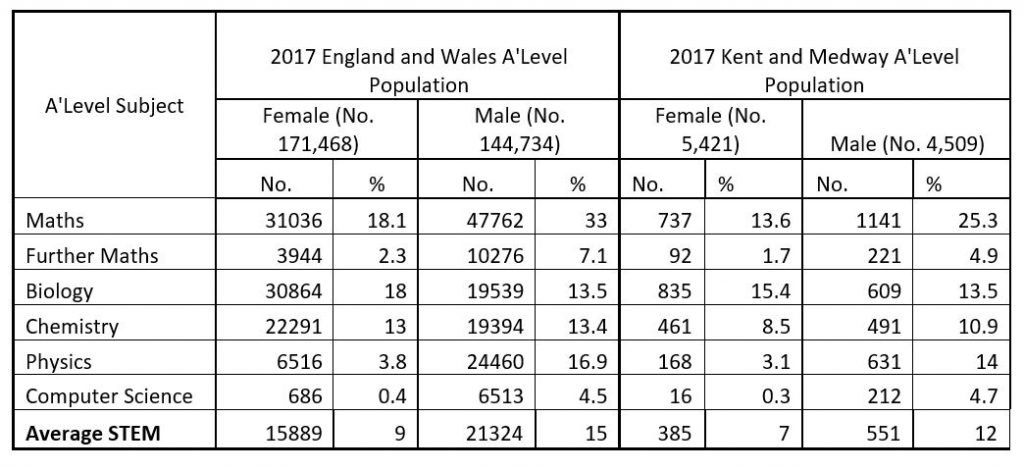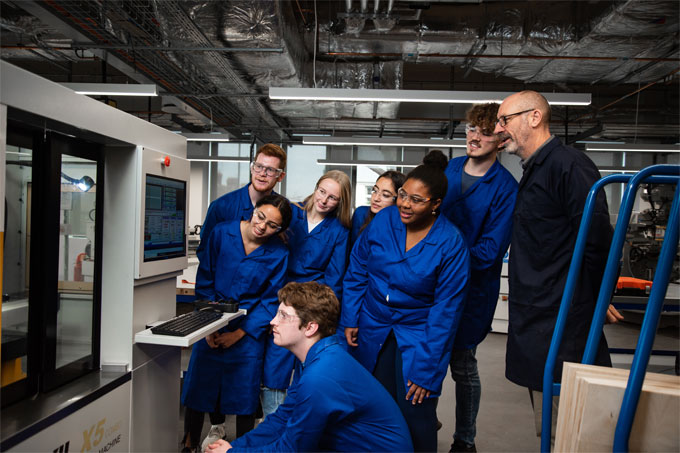Dr Anne Nortcliffe explains why Kent and Medway have bucked a national trend and seen an increase in students choosing to study STEM A-levels.
Figures recently released show that Kent and Medway are bucking a national downward trend regarding the number of students deciding to study for STEM A-Levels.
Every year the Government publishes 16 to 19 years old Level 3 attainment, including statistics on STEM A-levels.
In 2017 in Kent and Medway the uptake of STEM A-levels was below the national average for both genders in all STEM subjects (Table 1).
Fast forward to 2021, with a backdrop of a falling national population of 16-19 years old and fewer students completing A-levels than in 2017, the number of students nationally choosing to study STEM subjects in total declined. In Kent and Medway, in real terms the number of students studying for STEM A-Levels actually increased (Table 2).
One other success story shown in these figures is the increase in number of females not only in Kent, but nationally, taking up STEM subjects. Especially Computing and Physics, the key A-level subjects to support progression to Engineering, Technology and Design subjects at university.
So how has Kent and Medway has bucked the national trend and increased the number of students studying STEM A-levels?
One could argue it has been through collective efforts of Kent and Medway Collaborative Outreach Programme (KaMCOP), The STEM Hub, Kent and Medway EDGE Hub, Primary and Secondary Engineering in Kent (sponsored by Canterbury Christ Church University and Port of Dover) and teams from the University’s School of Engineering, Technology and Design that have made the difference through their collective schools and colleges STEM outreach activities.
In 2017 Canterbury Christ Church University launched the Kent and Medway Engineering, Design, Growth and Enterprise (EDGE) Hub, followed a year later with the opening of our new School of Engineering, Technology and Design. Supported by the South East Local Enterprise Partnership, and Office for Students, the Kent and Medway EDGE Hub was an ambitious project to support the transformation of the region through providing a holistic and inclusive approach to addressing the regional skills shortages and sector diversity, whilst promoting participation and social mobility in higher education through Design and STEM subjects.
In 2018 Siani and Dacin evaluated the collaborated outreach partnership activities in schools and colleges, and identified that relevant STEM learning activities and opportunities have a positive impact and on the short, mid, and long term unbiased pipeline to STEM. The outcome of the ASPIRE Programme also found that meaningful STEM outreach at each key stage in the UK education leads to students progressing to a STEM career.
Table 1 – 2017 Uptake of STEM A-levels in England and Wales in comparison to Kent and Medway

Table 2 – 2021 Uptake of STEM A-levels in England and Wales in comparison to Kent and Medway

Dr Anne Nortcliffe is Head of School of Engineering, Technology and Design.
 Expert comment
Expert comment Jeanette Earl
Jeanette Earl 2316
2316


